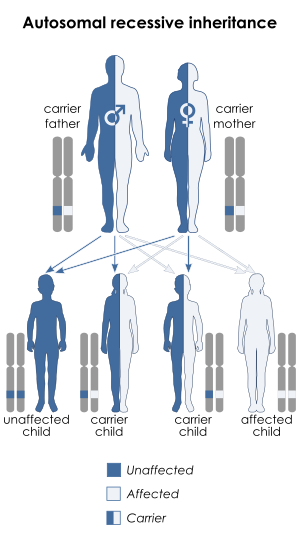
Congenital muscular dystrophy

Congenital muscular dystrophies are autosomal recessively-inherited muscle diseases. They are a group of heterogeneous disorders characterized by muscle weakness which is present at birth and the different changes on muscle biopsy that ranges from myopathic to overtly dystrophic due to the age at which the biopsy takes place. Congenital muscular dystrophies are autosomal recessively-inherited muscle diseases. They are a group of heterogeneous disorders characterized by muscle weakness which is present at birth and the different changes on muscle biopsy that ranges from myopathic to overtly dystrophic due to the age at which the biopsy takes place. Most infants with CMD will display some progressive muscle weakness or muscle wasting (atrophy), although there can be different degrees and symptoms of severeness of progression. The weakness is indicated as hypotonia, or lack of muscle tone, which can make an infant seem unstable. Children may be slow with their motor skills; such as rolling over, sitting up or walking, or may not even reach these milestones of life. Some of the more rarer forms of CMD can result in significant learning disabilities. The genetics of congenital muscular dystrophy are autosomal recessive which means two copies of an abnormal gene must be presentfor the disease or trait to happen. In the case of collagen VI-deficient, it is autosomal dominant, which means a child could inherit the disease from only one copy of a gene present in only one parent. The prevalence for congenital muscular dystrophy seems to be between 2.6-4.5 in 10,000 according to Reed, 2009. MDCIA, for example is due to a mutation in the LAMA-2 gene and is involved with the 6q2 chromosome. In terms of the mechanism of congenital muscular dystrophy, one finds that though there are many types of CMD the glycosylation of α-dystroglycan and alterations in those genes that are involved are an important part of this conditions pathophysiology For the diagnosis of congenital muscular dystrophy, the following tests/exams are done: The subtypes of congenital muscular dystrophy have been established through variations in multiple genes. Phenotype, as well as, genotype classifications are used to establish the subtypes, in some literature. One finds that congenital muscular dystrophies can be either autosomal dominant or autosomal recessive in terms of the inheritance pattern, though the latter is much more common
